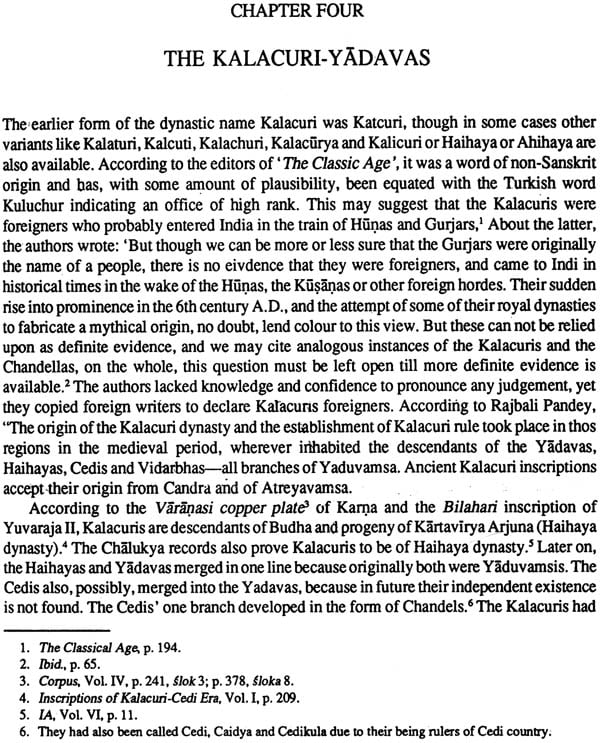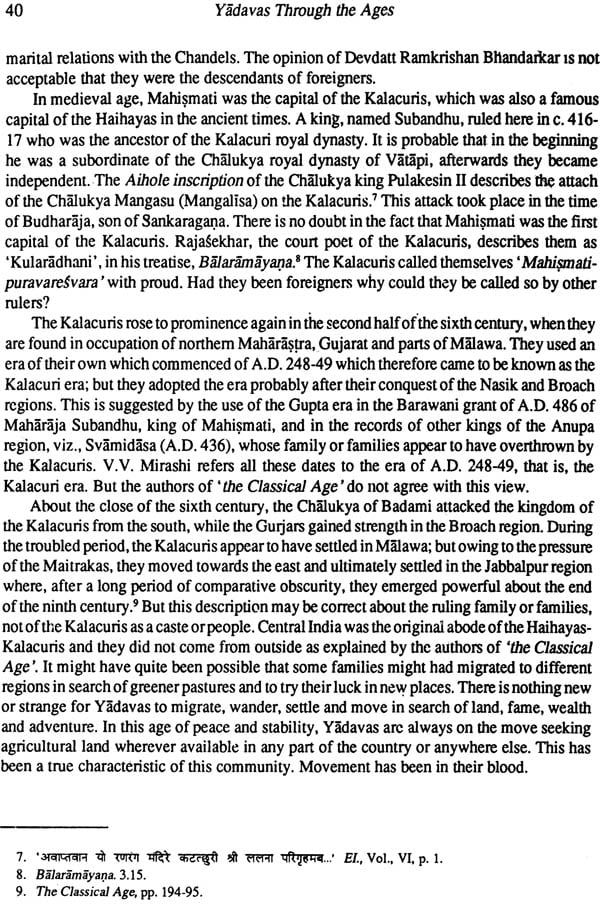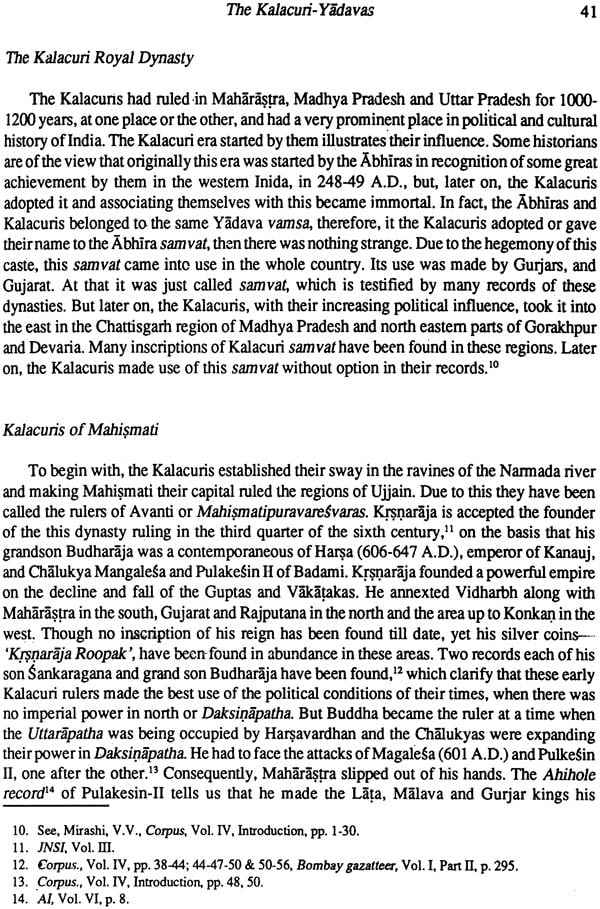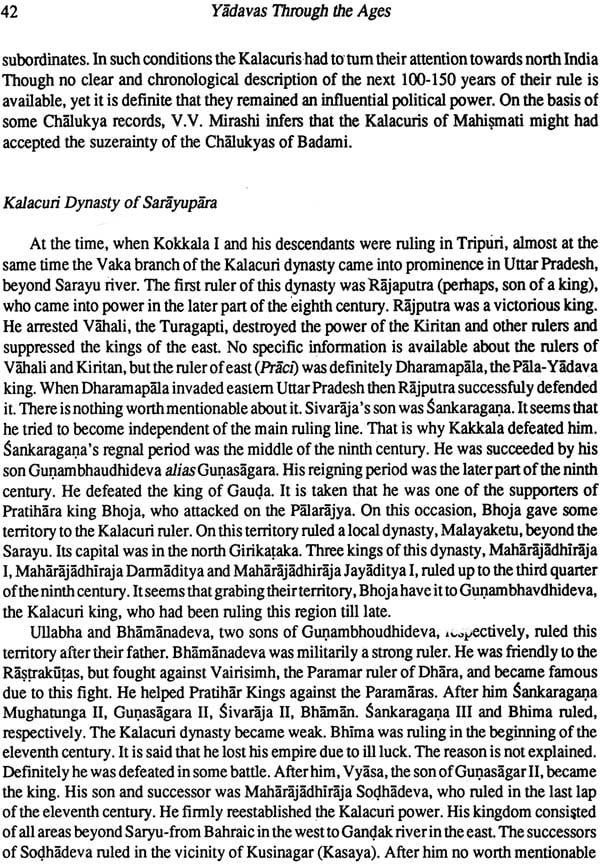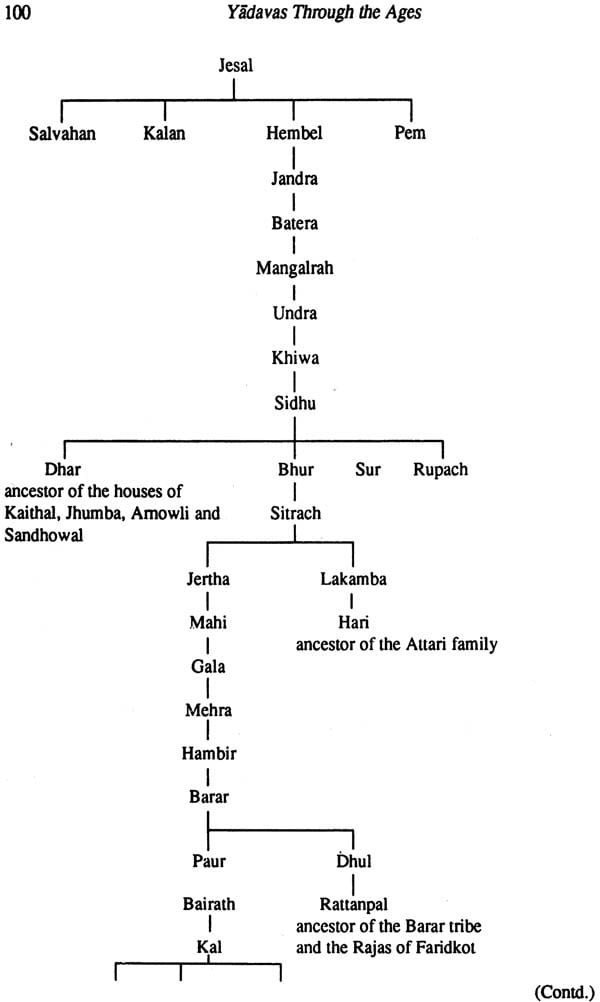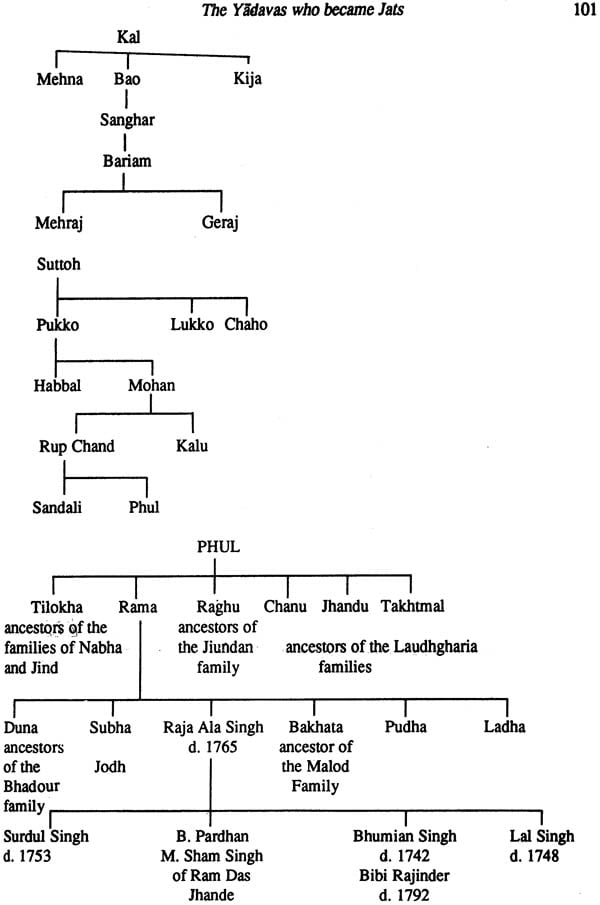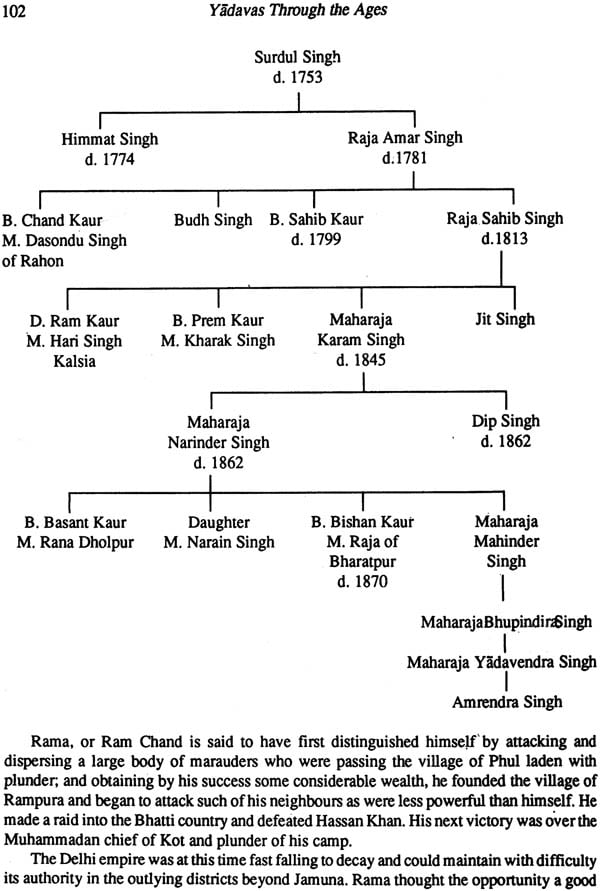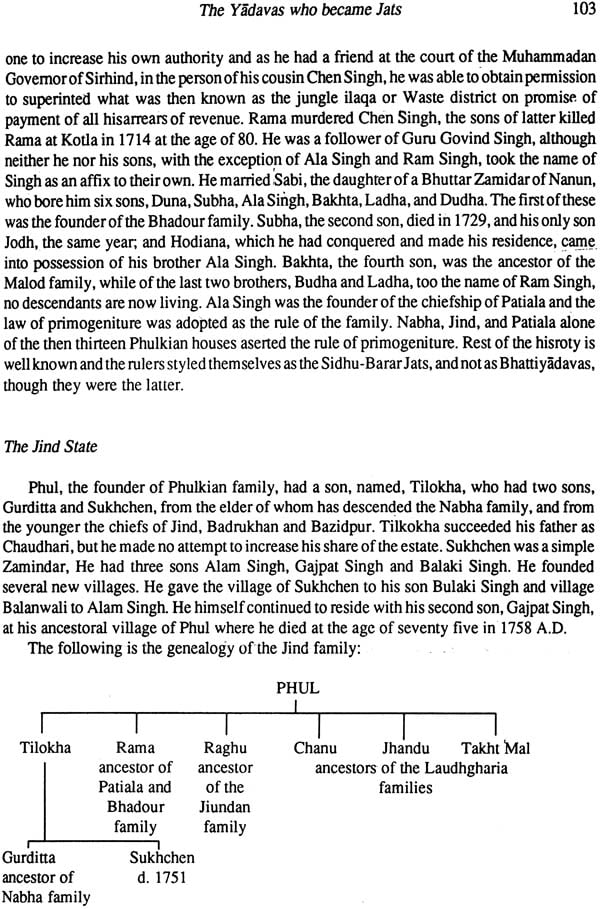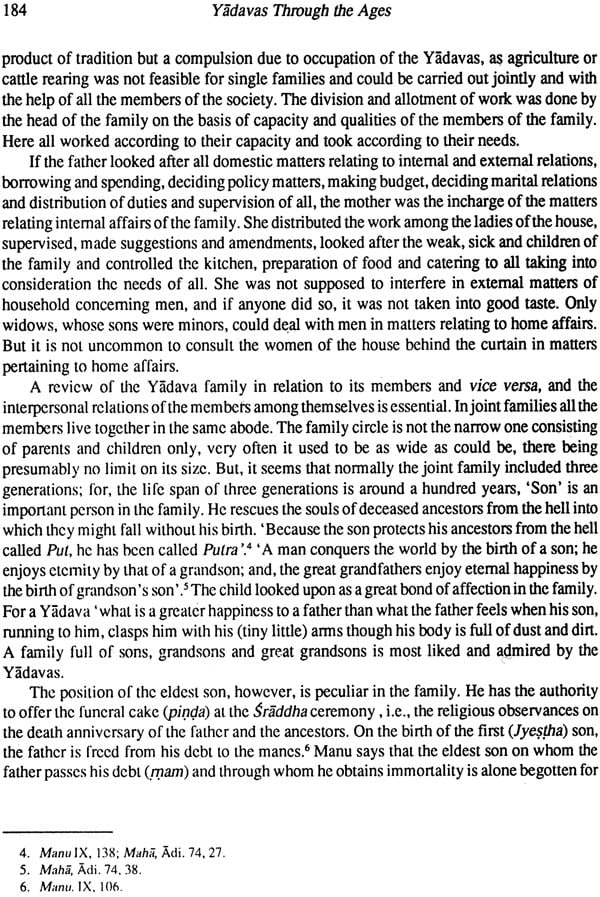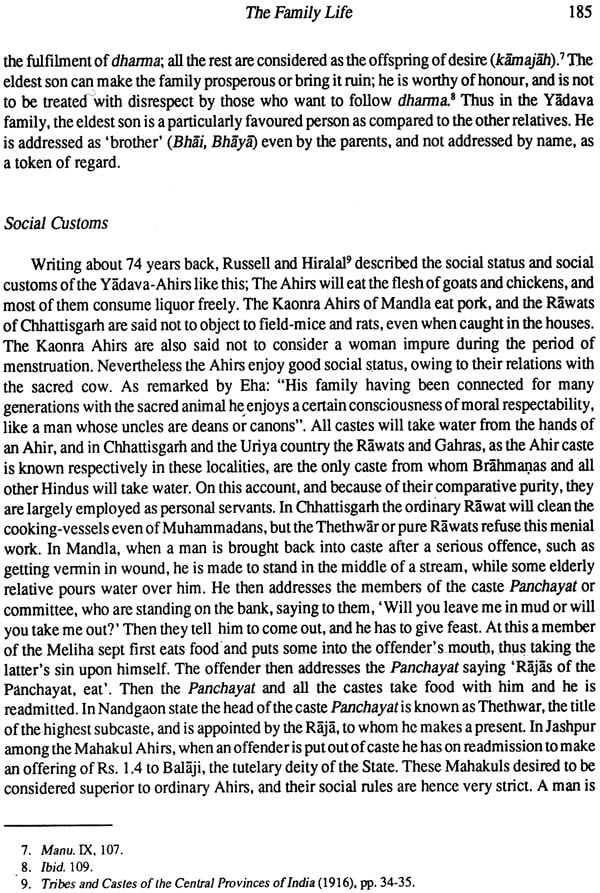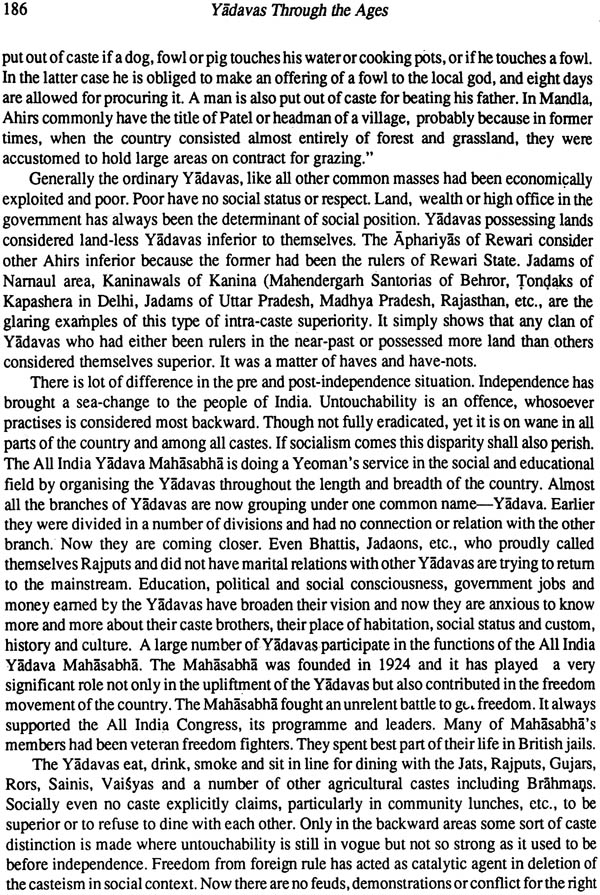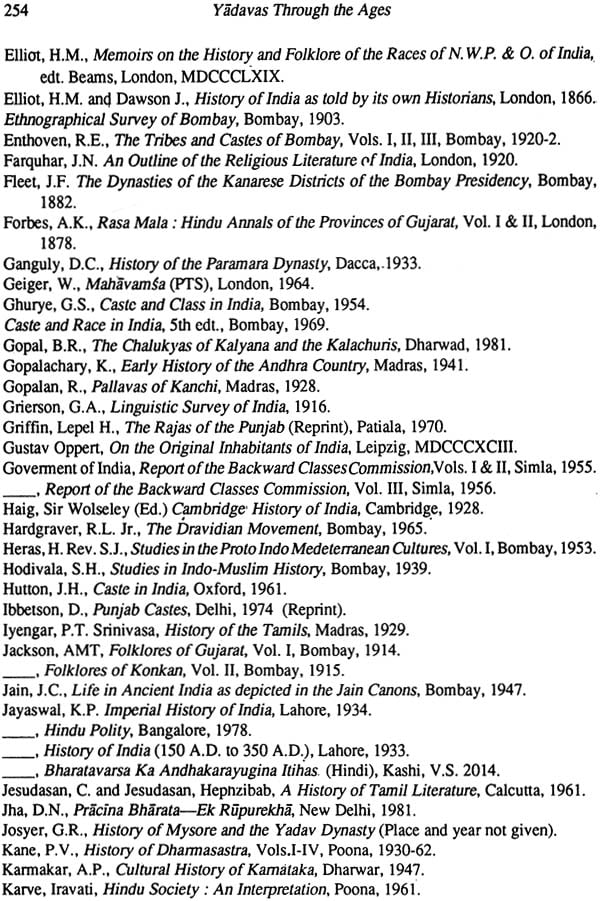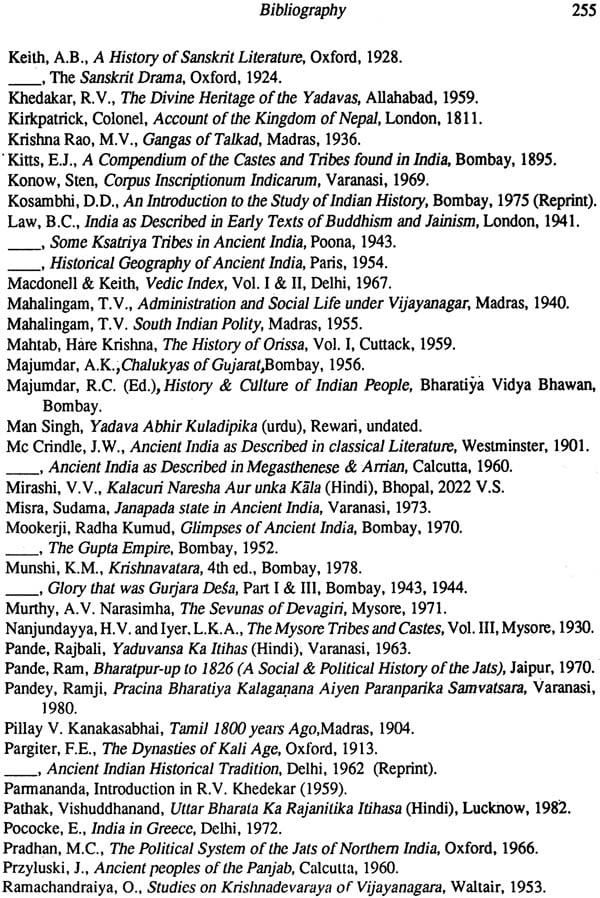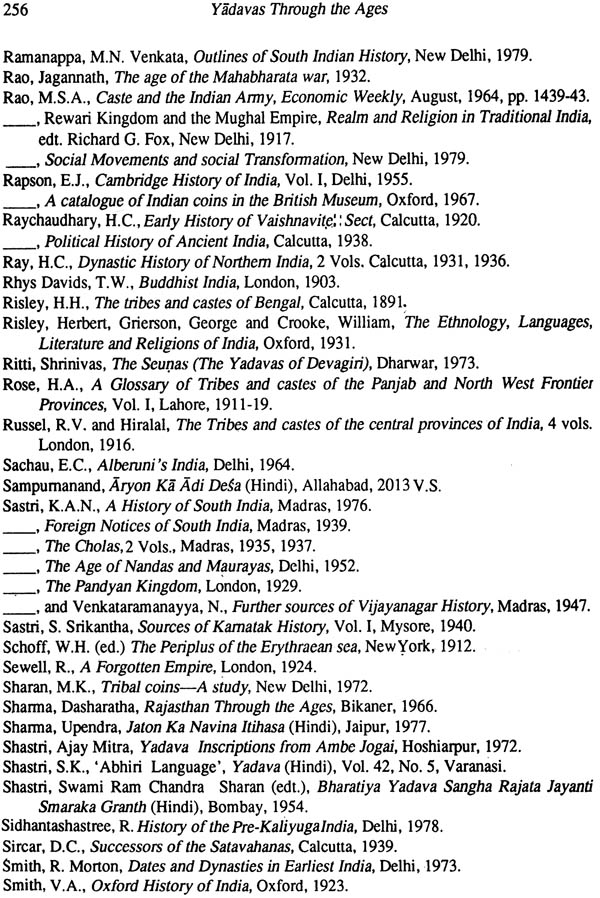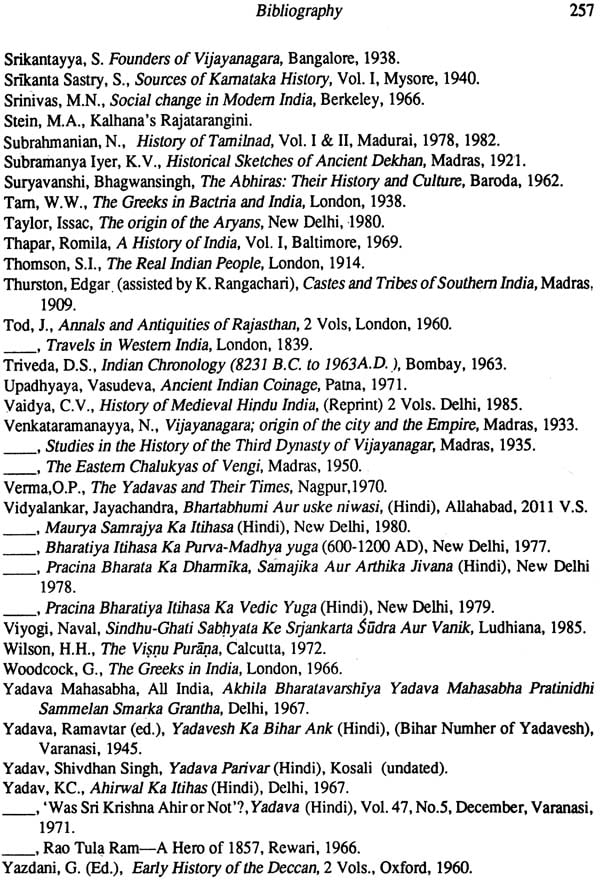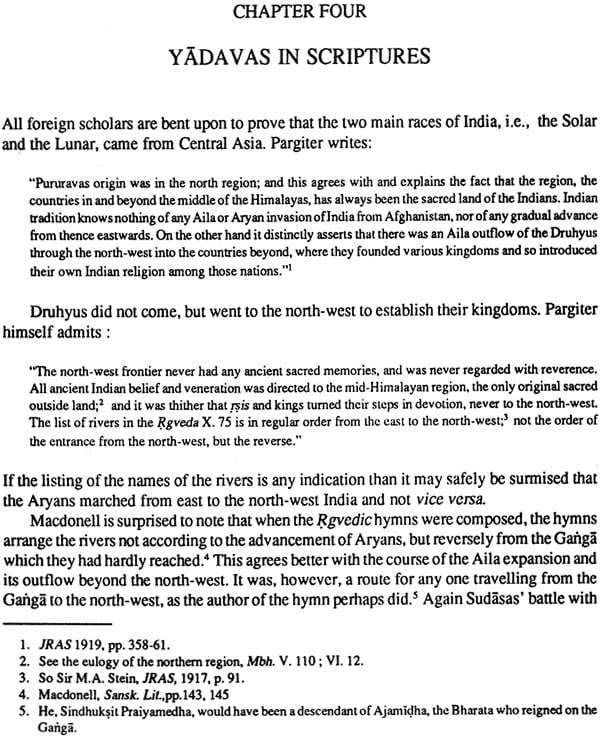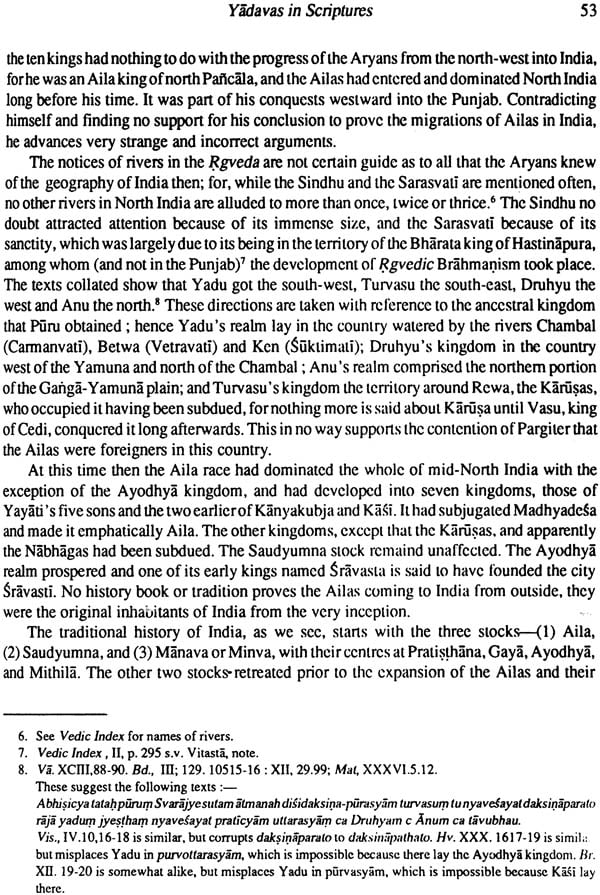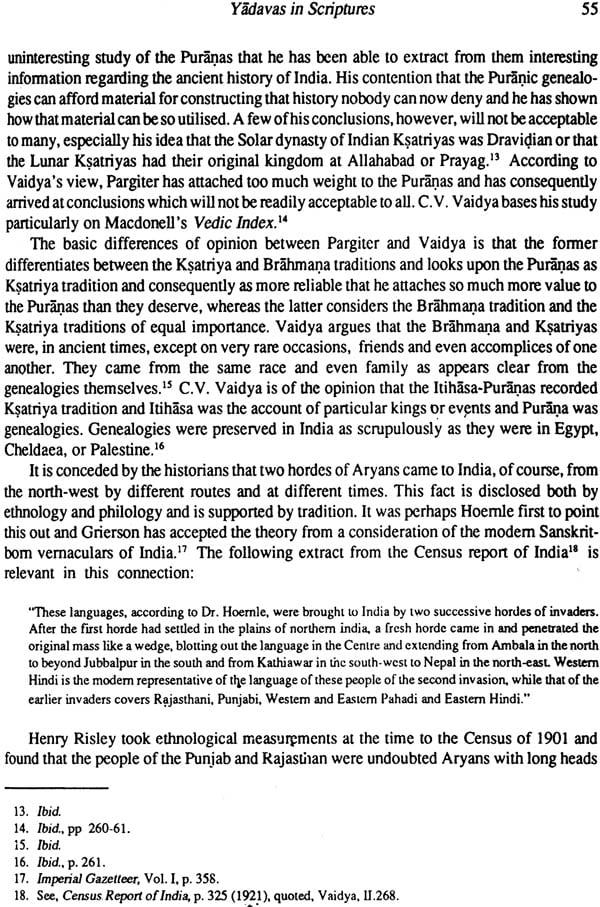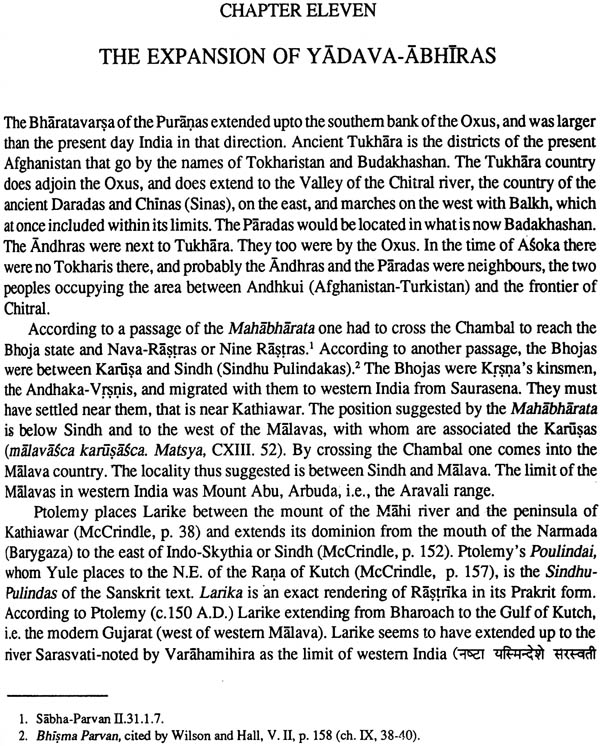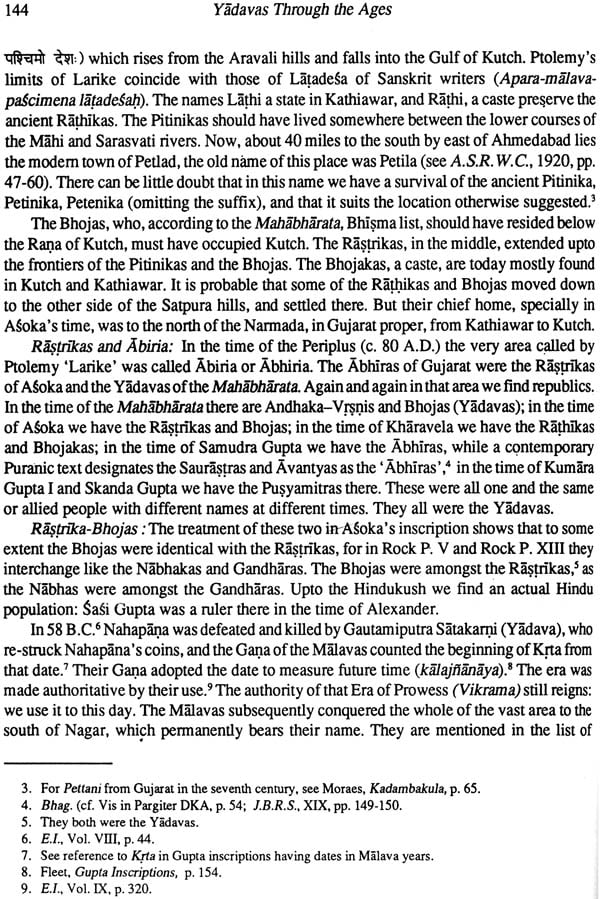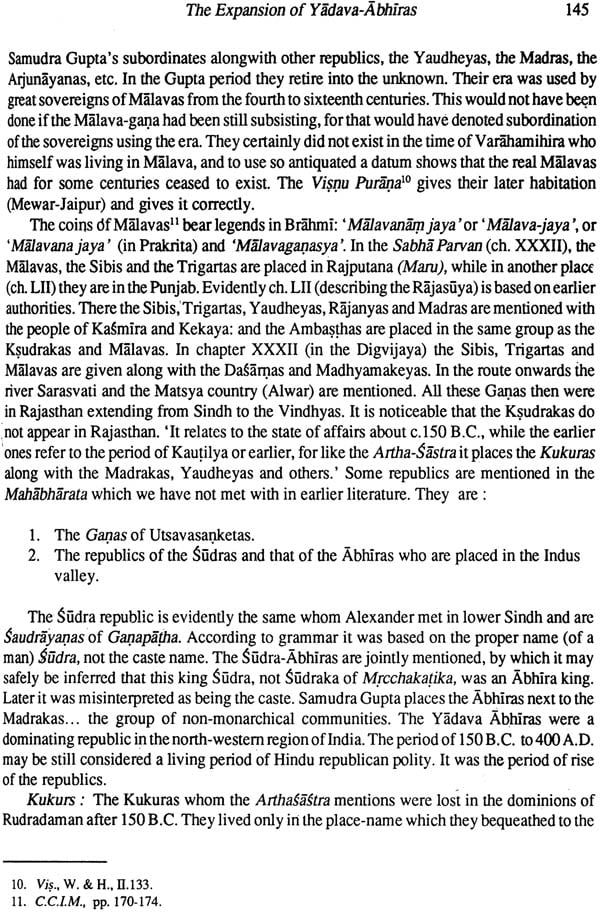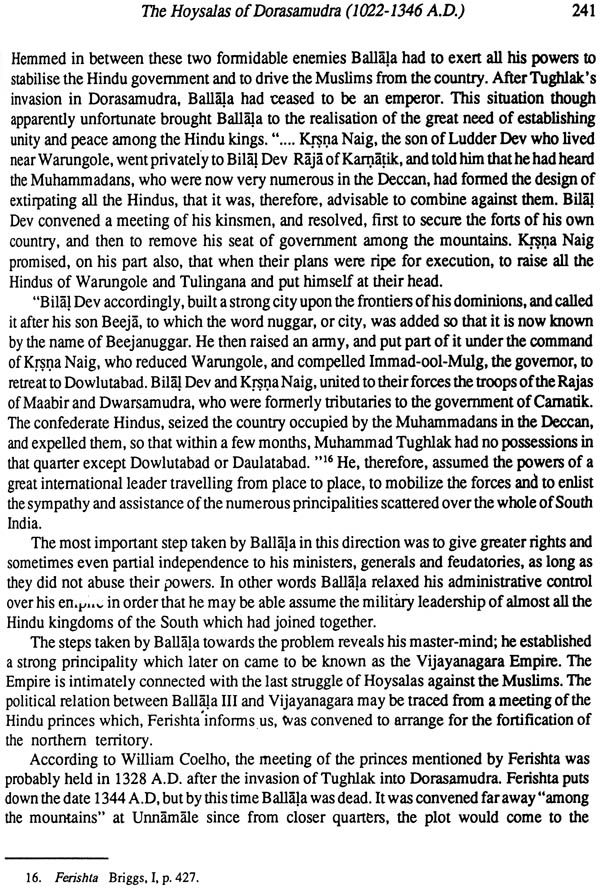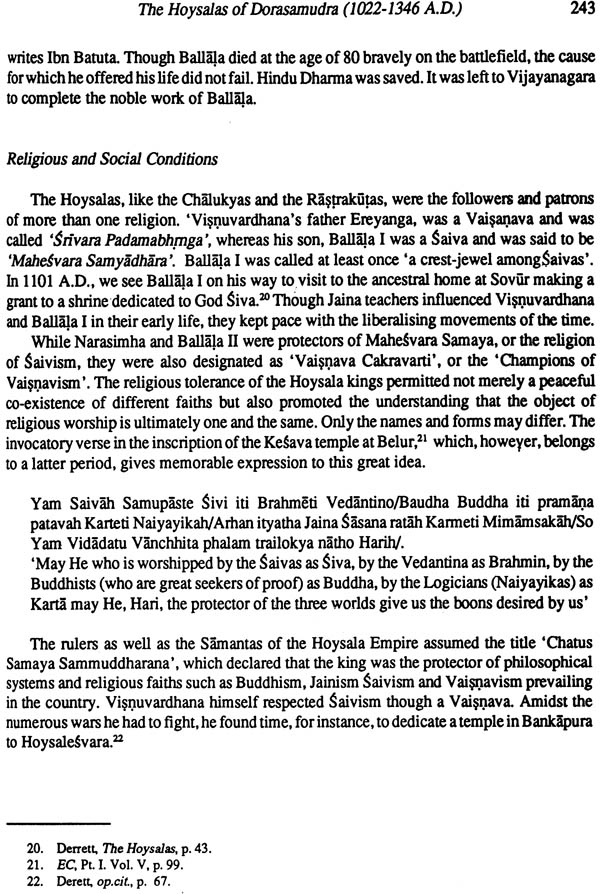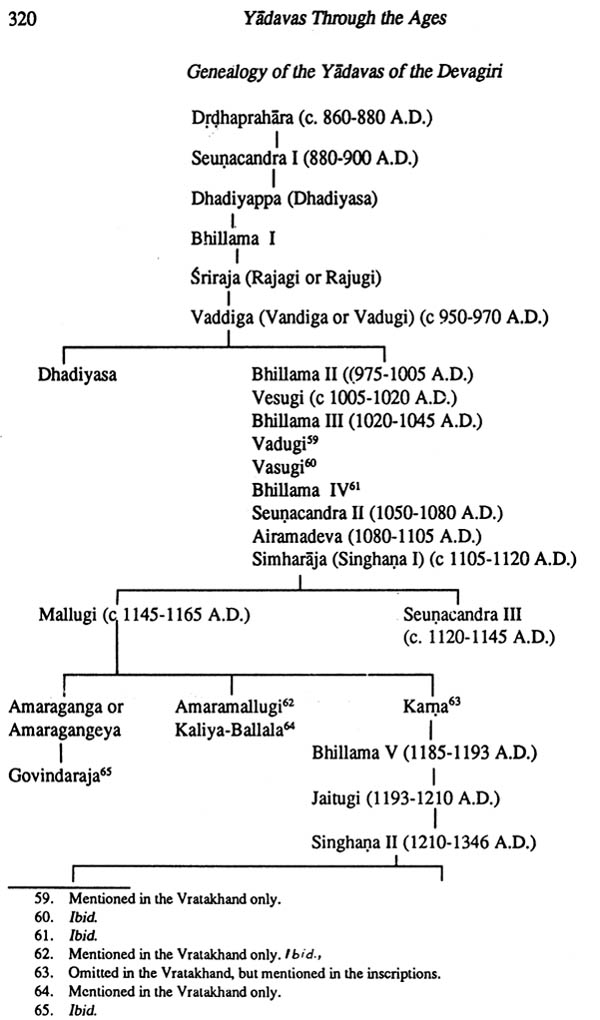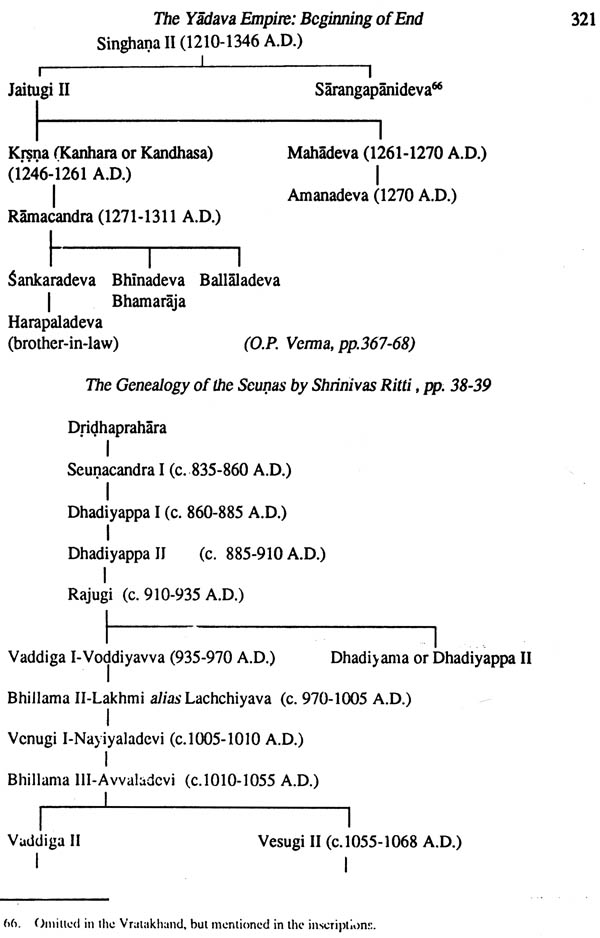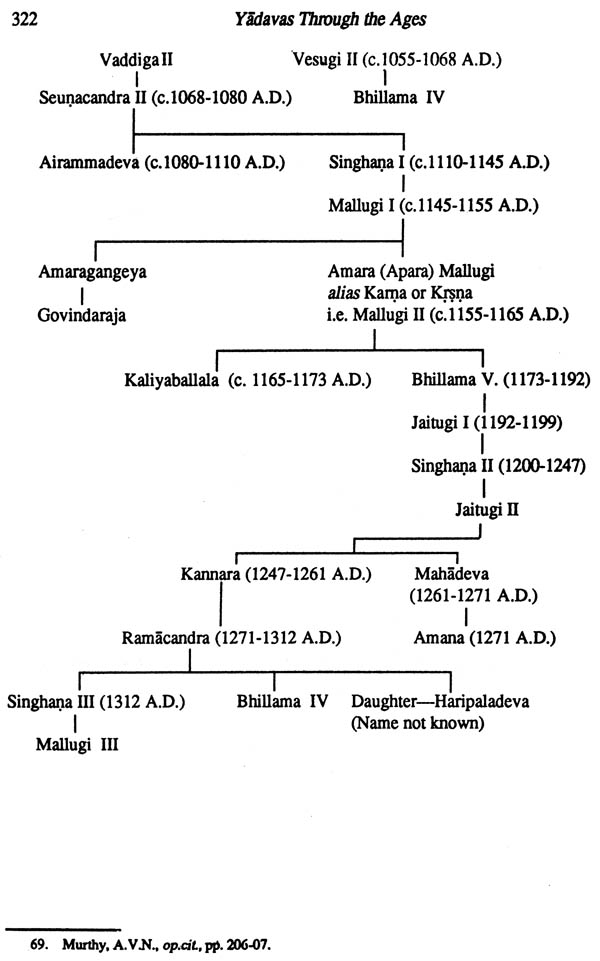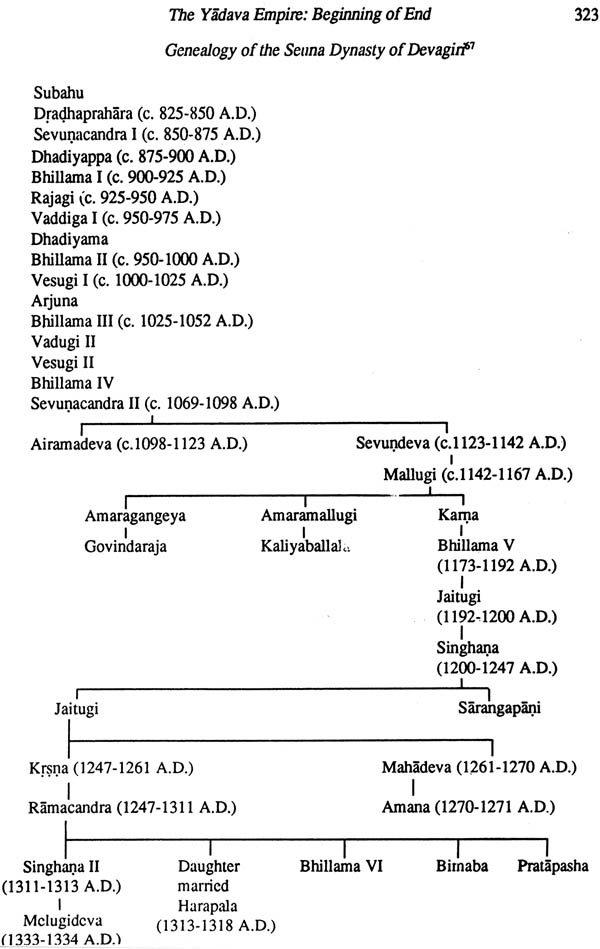
Yadavas Through The Ages
Book Specification
| Item Code: | NAL500 |
| Author: | J. N. Singh Yadav |
| Publisher: | Sharada Publishing House |
| Language: | English |
| Edition: | 1992 |
| ISBN: | 8185616035 |
| Pages: | 692 (8 B/W Illustrations) |
| Cover: | Hardcover |
| Other Details | 9.5 inch x 7.5 inch |
| Weight | 1.70 kg |
Book Description
The Yadus or Yadavas had been one of the five Janas of the ancient India. They played an important part in the field of culture, religion philosophy, history and development of the sub-continent. They gave thinkers like Yadu, Krsna, his philosophy of Gita, of action and devotion; Neminatha, the twenty-second tirthankara of the Jainas; mighty empires, new pastures upto the Central Asia for the Advancement of religion, culture and arts. They carried the vedic ideology and culture to the farthest of South India. They contributed significantly to the cultural advancement of the North equally, patronised art and culture, defended the country from the foreign onslaughts and established republican system of governance much before the Greeks. They constructed strong forts magnificent palaces, places of worship, canals, dams and roads founded cities and capitals, cultivated new pastures and introduced a system of agriculture and animal husbandry. They were the defenders of various faiths and the country.
The yadavas have been known by different nominatures or sub-names, such as Cholas, Cheras, Haihayas, Satvatas, Andhakas, Vrsnis, Tundikeras, Pandyas, Kalacuris, Rastrakutas, Jadejas, Palas, Guptas, Abhiras, Ahiras, Idiyans, Wodeyars, Pallavas, Hoysalas, etc., etc. It has been a riddle for the scholars to recognize all these branches of this great community and to give a comprehensive and connected account of the Yadavas of different regions and times. This study is the first attempt to delineate a comprehensive history of the Yadavas from ancient times up to. the modern period. It is a concentrated effort to trace the historical origin of the Yadavas, their expansion, their place in the polity, society and culture, their contribution to different aspects of social, cultural and agriculture, political and cultural life and trade and industry of the sub-continent. The author after a deep and concentrated study of the Vedas, the Puranas, the Upnisadas, Mythology, history and allied literature has produced this scientific study of a people who constitute the single largest community of India. Though the Yadavas have adopted many religions, and even castes, this study focuses its lens mainly on the Yadavas who are ‘Hindus’. The area of the study has been mainly the political boundaries of India, though, at times, these have been crossed whenever it was necessary for the topic The present work is a pioneer study of the subject and shall inspire scholars to use it as a source and reference book.
Dr. J.N. Singh Yadav, born on 12 June, 1937 (Bashir Pur, Distt.Mahendragerh-Haryana), did his graduation and M.A.in political Science from the Panjab University, Chandigarh and obtained the Ph.D. degree from the Kurukshetra University, Kurukshetra.
Dr. Yadav has rich experience of more than a quarter of a century of teaching postgraduate and under-graduate classes in various colleges of repute in Haryana. He is intimately connected with various social reform movements and educational institutions. He took voluntary retirement from service to devote more time for research and social work. Dr. Yadav is a prolific prolific writer in English and Hindi. His book Lal Bahadur Shastri: A Biography was adjuged one among the best fifty biographies written during the period 1947-1972 in India and selected out of several thousand titles received by the National Book Trust and displayed in National Exhibition of Books at the World Book Fair in March, 1972 in New Delhi. His book The Indian Speaker: Crisis of Identity was well-received and appreciated by the academic world. Besides this, he has edited Haryana: Studies in History and Politics. He has written books for the students of undergraduate classes, such as Principles of Political Science, Indian Constitution and Administration, etc. He has contributed a number of research papers and articles to various learned journals and seminars.
Coming as I do From Yadava caste, it was inevitable that I should grow up hearing the name and fame of this caste. As I grew old I became anxious to know more about the Yadavas, their origin and history. But when I made attempts to satisfy my urge for more knowledge and information about this race, I was disappointed not find much material about the Yadavas in the books.
My grandmother was my greatest teacher to make me learn mythology, religion and history. She was unique in many ways-her style of vivid and graphic description and narration of Puranic happenings and characters, analyses of events, concluding morals and inspiration to live a life of sacredness and morals, was inspiring for me to live. She kept me spell bound in my childhood by narrating orally the Mahabharata, the Ramayana and other religious myths, occasionally she went on pilgrimage and retumed with more religious knowledge to pour it in me. As result, I became more and more interested in anthology and religion.
But this knowledge was of little use in my school education, which was quite different. Our text-books, particulary, the history books gave an impression that majority of the Indians came from outside and were not indigenous, so on and so forth. The idea of writing out the history of Yadavas was prominent mind since my early age, and it grew stronger when I went through the history books and not found conspicuous narration of the Yadavas. The more I read, the more I became determined to write the history of Yadavas. I plunge myself body and soul in the venture. There were many hurdles, but I swam against the waves and succeeded in my efforts at last.
The main difficulty was to identify the different branch-names of the Yadavas in which they were divided at times having little or no knowledge of the other branch. Language, tradition, even religion, region were barriers in recognising each other. Yadavas of north India had not even an iota of information or knowledge of the Yadavas of south India, and vice-versa. In north they were known by the surnames of Yadavas, Ahir, Abhir, Gosh, Gwala, Nandavamsi, etc., while in south they were known as Idiyan, Konar, Krishnavaha, Gawali,Hoysala, Wodiyar, etc. One branch considered the other inferior. There was no interaction between different septs/branches of the same region nor inter state relationship. Some of them also embraced Islam and separated from the main root, No scholar made any effort to trace their origin or write their history. The Yadavas were not lucky enough to find some good scribes to record testimony of their valour and historic achievements. While the Rajputs had Col. Tod, the Marathas Grant-Duff, the Cunningham, and even the jats had K.R.Kanungo, the Yadavas had none. The All India Yadava Mahasabha approached Rajbali Pandey to writ the history of Yadavas, who miserably failed them.
| Preface | ix | |
| List of Abbreviation | xi | |
| Volume I | ||
| Part One | ||
| Chapter One | Origin of Yadavas | 1 |
| Chapter Two | The Haihaya Yadavas | 13 |
| Chapter Three | The Great Expansion | 27 |
| Chapter Four | Yadavas in Scriptures | 52 |
| Chapter Five | Yadavas in Vedic and Post-Vedic Age | 70 |
| Chapter Six | Yadavas in Treta Age | 80 |
| Chapter Seven | Sri Krsna and His Times | 92 |
| Chapter Eight | The Republican Yadavas | 110 |
| Chapter Nine | The Bharata War | 121 |
| Chapter Ten | The Date of Bharata War | 134 |
| Chapter Eleven | The Expansion of Yadava-Abhiras | 143 |
| Chapter Twelve | Yadavas after Bharata War | 148 |
| Chapter Thirteen | Yadava Dynasties of Early Kaliyuga | 152 |
| Part Two | ||
| Chapter One | The Yadavas in Daksinapatha | 171 |
| Chapter Two | The Satavahana-Yadavas | 186 |
| Chapter Three | The Pandya Yadavas | 195 |
| Chapter Four | The Nolamba Pallava Yadavas | 205 |
| Chapter Five | The Rastrakuta Yadavas (752-973 A.D.) | 214 |
| Chapter Six | Kalachuris of Kamataka | 228 |
| Chapter Seven | The Hoysalas of Dorasamudra (1022-1346 A.D.) | 236 |
| Chapter Eight | The Seuna Yadavas of Devagiri (834-1334 A.D.) | 257 |
| Chapter Nine | The Seune YadavasDevagiri | 267 |
| Chapter Ten | The Sovereign Rule | 280 |
| Chapter Eleven | Yadavas at zenith of Glory | 293 |
| Chapter Twelve | The Yadava Empire: Beginning of End | 309 |
| Chapter Thirteen | The Yadava Empire of Vijayanagar (1336-1485 A.D.)-I | 325 |
| Chapter Fourteen | The Yadava Empire of Vijayanagar (1485-1571 A.D.)-II | 330 |
| Chapter Fifteen | The Yadava Empire of Vijayanagar (1571-1678 A.D.) III | 344 |
| Chapter Sixteen | The Yadava Empire of Vijayanagar-IV Art, Architecture and the People | 353 |
| Chapter Seventeen | Some Minor Ruling Families | 368 |
| Chapter Eighteen | The Wodiyars (Yadavas of Mysore) (1399-1947) | 374 |
| Volume II | ||
| Chapter One | The Abhiras or Ahirs | 1 |
| Chapter Two | The Abhira Rulers of South West | 20 |
| Chapter Three | Yadava-Ahir Rulers of Saurastra | 28 |
| Chapter Four | The Kalachuri-Yadavas | 39 |
| Chapter Five | The Kalachuris of Tripuri | 46 |
| Chapter Six | The Pala-Yadava Dynasty | 57 |
| Chapter Seven | The Jadam (Bhatti)-Yadavas of Jaisalmer | 68 |
| Chapter Eight | Expansion and Consolidation | 79 |
| Chapter Nine | Contact with Mughals | 89 |
| Chapter Ten | The Yadavas who become Jats | 97 |
| Chapter Eleven | The Jadam-Yadavas of Braja Janapada | 110 |
| Chapter Twelve | The Ahir Kingdom of Rewari | 120 |
| Chapter Thirteen | The Expansion of Yadavas | 135 |
| Chapter Fourteen | Distribution of Yadavas | 150 |
| Chapter Fifteen | Social Life and Culture | 159 |
| Chapter Sixteen | Rites and Rituals | 170 |
| Chapter Sixteen | The Family Life | 183 |
| Chapter Eighteen | Games and Sports | 196 |
| Chapter Nineteen | Sub-Castes (Gotras) | 214 |
| Chapter Twenty | The Contemporary Yadavas | 228 |
| Bibliography | 251 | |
| Index | 261 | |
| Illustrations |
